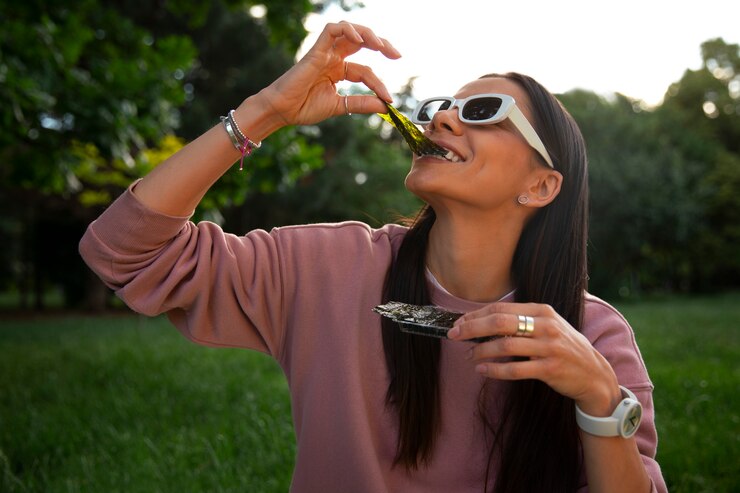
Anxiety can often lead people to seek comfort in activities like exercising, binge-watching TV shows, meditation, or even trying CBD edibles. During the pandemic, when major states in the U.S. labeled cannabis businesses as essential, cannabis dispensaries saw a surge in sales. This included both medical and recreational cannabis as people across the country turned to it as a source of relief. As millions were confined to their homes, feelings of stress and anxiety became common, encouraging many new users to explore cannabis. Some relied on medical cannabis cards, while others used their state-issued IDs for purchases.
At the same time, concerns about the impact of smoking on respiratory health began to grow. With reports highlighting the damaging effects of COVID-19 on the lungs, methods like vaping and smoking started falling out of favor. Instead, many turned to cannabis-infused edibles as an alternative. Since then, demand for edibles has skyrocketed, with countless products being sold to both medical patients and recreational users. This trend reflects not only a shift in consumer preference but also a deeper need to address stress and other pandemic-triggered challenges.
Sales of edibles have continued to rise, and it’s clear why. COVID-19 brought uncertainty, particularly in its early days, before people understood that it was primarily a respiratory illness. Naturally, many began seeking non-inhalable cannabis options, and edibles became the go-to choice. Research published by sources like the New England Journal of Medicine revealed that individuals with a history of smoking faced a higher risk of severe illness from the virus. This made edibles an appealing option for those wanting to avoid inhalable cannabis products.
Additionally, concerns about supply shortages and how long the virus would last further pushed people to stock up on cannabis-infused products. Many took to preparing homemade edibles from cannabis flower, while others opted for pre-made snacks, like CBD gummies. Products like gummies, often infused with THC, provided an easy and discreet way for users to enjoy cannabis without the risks tied to smoking. For some, edibles helped alleviate chronic pain, while others found in them a way to battle the stresses of quarantine.
The market for cannabis edibles offers a wide variety, from lollipops and cookies to gums and candies, though gummies remain the most popular choice. This popularity is largely due to how edibles work in the body. When consumed, these products are processed by the liver, leading to longer-lasting and often more intense effects. While THC edibles are associated with a psychoactive high, CBD edibles are favored for their ability to reduce anxiety and pain without intoxication.
The pandemic has spotlighted the growing demand for CBD edibles as people look for effective ways to manage their stress, anxiety, and pain. Unlike sharing a joint, distributing gummies allows for adherence to social distancing guidelines, making them a practical option during these times. Many Americans purchase cannabis products using cash, and with CBD and THC gummies in high demand, companies have introduced promotions and reduced their prices to attract more buyers. As a result, it’s now easier than ever to have affordable edibles delivered right to your door.
The affordability and convenience of CBD edibles make them a smart choice for many consumers. Compared to other cannabis products like flowers, edibles are cost-effective and often available in bulk. Additionally, their discreet nature and ability to provide relief from chronic pain make them a practical option for managing wellness. Whether you’re dealing with stress or physical discomfort, CBD edibles can offer a reliable solution.
Among all the edibles available, gummies remain the favorite, but chocolates and cookies are also gaining popularity. When choosing an edible, it’s essential to understand that they fall into two main categories: traditional options (like gummies and food-infused products) and sublingual edibles (like lollipops and gums). The primary difference lies in their effects—traditional edibles offer long-lasting effects, while sublinguals are faster-acting.
It’s also important to know the difference between CBD and THC. Both come from the cannabis plant, but CBD derived from hemp usually has lower THC levels than CBD from marijuana. Consumers should decide their goals—whether they’re seeking wellness benefits from CBD or a mild high from THC—and choose products accordingly. For medicinal benefits, full-spectrum CBD products, which contain up to 0.3% THC, are a great option. It’s also wise to check lab reports, which detail the THC and CBD content in the product, to ensure you’re getting the right balance. Many manufacturers provide these reports online or upon request.
CBD edibles have quickly become a staple on dispensary shelves, and their popularity continues to grow. As a consumer, it’s crucial to check labels carefully to understand whether the product contains full-spectrum, broad-spectrum, or CBD isolate. Full-spectrum and broad-spectrum products may have varying levels of THC, while isolates contain pure CBD. Being mindful of these details will help you make informed choices and get the most value for your money when buying from licensed dispensaries.